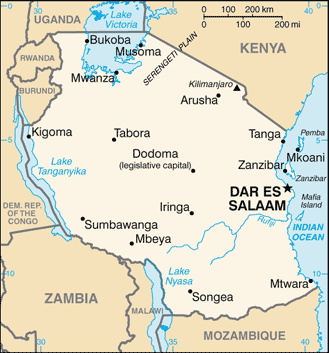The consumption of anthrax tainted meat has been linked to an outbreak of suspected Bacillus anthracis infections in Nzoka village, Momba district of the Songwe Region of Tanzania, according to Tanzanian news source, The Citizen.

Four people have died and some 77 people were sickened after eating the suspect meat.
Juma Irando, Momba District Commissioner, said the district leadership was working on measures to address the anthrax outbreak, a highly infectious, fatal bacterial disease of mammals, especially cattle and sheep.
According to the Merck Veterinary Manual, Anthrax is a zoonotic disease caused by the spore-forming bacterium Bacillus anthracis. Anthrax is most common in wild and domestic animals but can also be seen in humans exposed to tissue from infected animals, contaminated animal products or directly to B anthracis spores under certain conditions.
Depending on the route of infection, host factors, and potentially strain-specific factors, anthrax can have several different clinical presentations. In herbivores, anthrax commonly presents as an acute septicemia with a high fatality rate, often accompanied by hemorrhagic lymphadenitis.
Anthrax: An interview with Dr Buddy Faries
B. anthracis spores can remain infective in soil for many years. During this time, they are a potential source of infection for grazing livestock. Grazing animals may become infected when they ingest sufficient quantities of these spores from the soil. In addition to direct transmission, biting flies may mechanically transmit B. anthracis spores from one animal to another.
People can get anthrax by handling contaminated animal or animal products, consuming undercooked meat of infected animals and more recently, intentional release of spores.
- African swine fever in China: 1st outbreak in Gansu province
- Cruise ship outbreak nears 600 ill with suspected norovirus
- Outbreak News This Week Radio Show 1-13-19
- Flu season in the US: Estimated 6-7 million cases to date
- Japan 2018: Measles, rubella and syphilis
- Brazil imported measles outbreak tops 10,000 cases last year
- Infectious disease bric-a-bracs: Cerebral malaria, Heroin vaccine
- Infectious disease news: Top 5 posts for the week Jan. 5- Jan. 11
- Rabies: The fatal Virginia case and some important lessons

